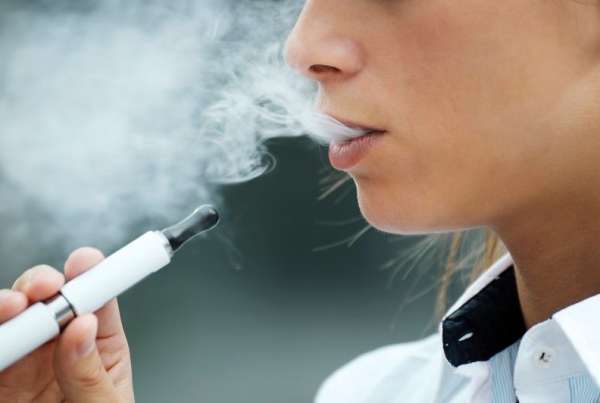It’s no secret that cigarettes are bad for you – from the carcinogenic effects of smoke inhalation, to the heavy use of pesticides in the cultivation of tobacco, and the various additives cigarette companies use to make their product more palatable or grant it a longer shelf life. But even in its natural state, tobacco is addictive and dangerous.
And particularly so for teens. Its main active compound is nicotine, an incredibly toxic stimulant drug in its pure form. Most of the time, nicotine enters the bloodstream through regulated nicotine products such as nicotine patches, nicotine gum, nicotine-containing “e-liquids”, and a variety of tobacco products.
It is not clear if the effects of nicotine can contribute to the development of cancer, like many of the other compounds in cigarettes, cigars, and other tobacco products. But nicotine is highly addictive – and that its effects on the brain are especially pronounced in teens, who eventually have a much harder time quitting cigarettes when they are older.
The Effects of Nicotine, From Cigars to E-Cigarettes
Nicotine products are commonly inhaled through cigarettes, cigarillos, cigars, and vapes/e-cigarettes. They are also ingested through gum and snuff, and sometimes administered through nicotine patches, which are designed for smoking cessation. While teen smoking has massively decreased in the years following the battles between the tobacco lobby and various public health and medical institutions, it has been supplanted in recent years by the vaping phenomenon.
Born from the e-cigarette industry, vaping involves the inhalation of specially designed “e-liquids” via an electronic device that heats the liquid and allows the user to inhale its vapors. These liquids are mostly made of water, glycerin, and a type of glycol, alongside an active ingredient like nicotine, and various additives for flavor and aroma. While nothing is “burnt” while vaping, the continued use of vaping devices can lead to their wear-and-tear, introducing trace amounts of heavy metals and unwanted chemicals into the vaper’s lungs.
Furthermore, many e-liquids are made with additives and flavorings that are potentially harmful. But these risks generally do not hold a candle to the overarching risks and effects of nicotine, which remains an active ingredient in most vaping products on the market. While you can get nicotine-free e-liquids, these are not without risk, and may lead to nicotine use later.
What Exactly Is Nicotine?
Nicotine is an addictive stimulant drug that poses a risk for the heart. Its addictive potential is due to its effects on the brain’s reward mechanism, or the limbic system, through the release of dopamine and research has shown that individuals with a high rate of anxiety are likely to use nicotine products as a way to self-medicate, as it can help with symptoms of anxiety in the short-term.
In the long-term, however, the effects of nicotine use leads to nicotine addiction and withdrawal symptoms, changes in appetite, increased risk of heart disease, anxiety disorders, and mood swings, and more. In its pure form, nicotine is incredibly toxic, to the point that it can induce vomiting and other signs of poisoning after skin contact.
Pure nicotine should never be handled by a non-professional. While nicotine poisoning is rarely fatal, it can induce severe illness. Even in its natural form, those unaccustomed to tobacco products and nicotine can easily get sick when accidentally coming into contact with too much of it – Green Tobacco Sickness is a type of nicotine poisoning experienced by young farmers after skin contact with wet tobacco leaves.
The Effects of Nicotine on the Adolescent Brain
Teens are more susceptible to the negative effects of nicotine because it is an addictive stimulant drug, and thus usually causes addiction in teens faster than in adults. Teen brains are still in development, and addictive substances tend to leave a much stronger and longer lasting impression on teen brains than adult brains. It is not until the age of about 25 that the human brain finishes development.
Until then, teens and young adults are more likely to take unnecessary risks, make poor decisions, and struggle with long-term choices. It is estimated that about three out of four teens who start smoking as adolescents continue to smoke well into adulthood. While the data is not in yet on whether vaping habits also continue into adulthood, the assumption can be made that it is equally dangerous due to both tobacco products and e-cigarettes sharing the same active compound.
Is Vaping Better Than Smoking?
A lot of the carcinogenic risk in cigarettes stems from the inhalation of burnt tobacco, and tar deposits in the lungs. However, while vaping products are safer than cigarettes and cigars, they are not totally safe. People have gotten sick from vaping.
Especially with modified vaping products and black-market e-liquids, there are still many studies currently trying to determine the long-term effects of vaping. Preliminary data urges teens and parents to be cautious, as e-cigarettes and other vaping products contain various potentially dangerous or harmful compounds.
What About Nicotine-Free Vaping?
There are countless different vaping products on the market, and many different so-called “e-liquids” to use them with. These e-liquids typically contain either nicotine or THC (in states where it is legal, or on the black market), but some e-liquids are composed of only artificial flavoring, water, and either propylene glycol or vegetable glycerin. Turning a vape on will heat the liquid, and the user then draws it through their lungs in vapor form. There is no smoke in an e-cigarette or vape.
There are, however, various potentially toxic compounds and heavy metals, and long-term research into the dangers of vaping is still ongoing. Preliminary data suggests that it is certainly healthier not to vape, not only because it might lead to experimentation with nicotine at an early age, but also because long-term e-cigarette use, even without nicotine, may lead to lung damage, lung disease, and/or cancer. Some of the potentially toxic compounds commonly found in e-liquids, even without nicotine, include:
-
- Diacetyl
- Acetyl Propionyl/Acetylpropionyl
- Acetoin
Many artificial flavoring chemicals can be potentially harmful when inhaled, such as:
-
- Acrolein
- Acrylamide
- Acrylonitrile
- Eucalyptol
- Formaldehyde
- Vanillin
- And more
Currently, vaping is agreed to be safer than smoking – but that doesn’t make it safe, particularly for teens with developing brains and bodies. And sadly, teens are the fastest growing market in the vaping industry and continue to adopt vaping faster than any other age group. The CDC also identified acetate (vitamin E) as a compound of concern in vaping products, where it is used as a thickening agent.
Any nicotine products should be avoided by teens, due to the addictive nature of nicotine, and the association between nicotine products and heart disease, lung disease, and cancer. Nicotine gum, while not used as often, is also an addictive product, and can lead to heart issues due to heart palpitations, and constricted blood vessels. Any level of nicotine exposure should be taken seriously, especially in adolescents.








